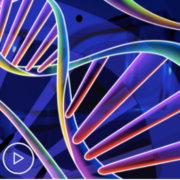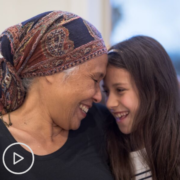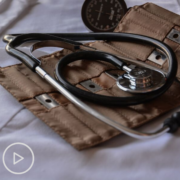Dr. Sangmin Lee reviews common misconceptions about clinical trials and shares examples of how these studies are changing the landscape of AML treatment. Want to learn more? Download the Program Resource Guide here.
Dr. Sangmin Lee is a hematologist-oncologist specializing in blood disorders and blood cancers at Weill Cornell Medicine and New York Presbyterian Hospital.
See More From The Fact or Fiction? AML Series
Related Resources
Transcript:
Patricia:
I’ll tell you a few things that we’ve heard from AML patients, and you tell me if this is fact or fiction. Okay, Dr. Lee?
Dr. Lee:
Yeah.
Patricia:
Clinical trials are the last resort treatment option.
Dr. Lee:
That’s actually not true in a lot of cases, because, yes, there are a lot of clinical trials after you have tried all of the standard therapy. But then, standard therapy in AML, like any other condition, are not perfect. So, there are many clinical trials where, even if you’re diagnosed with new AML, because standard care is not perfect, there are trials to try to improve upon the standard of care.
So, there may be clinical trials when you’re first diagnosed with AML, as well.
Patricia:
Yeah. How about this one: I feel like a guinea pig.
Dr. Lee:
Well, the clinical trial is to test drugs in humans. So, in a way, you are a test subject. But then, you have to remember that all of the drugs that we are testing have a rationale.
They all show promise, in terms of laboratory testing to kill leukemia cells in the test tube. And the problem is that, just because they are killed leukemia cells in the test tube, or in an animal model, doesn’t actually mean that it works in humans, or we know the safety profile. So, we need to do these testings to demonstrate that these drugs, which seem promising, actually work in humans.
Patricia:
Right. Well, then, that’s a good segue to this thing we’ve heard: Treatments being studied today may be the future standard of care.
Dr. Lee:
That is absolutely true, because all of the new developments that have come out, including Venetoclax, or IDH inhibitors, or other inhibitors, that are approved today, came through the clinical trial process. One example I like to include is a patient of mine, who, five years ago, had very, very aggressive leukemia, and she happened to have an IDH2 mutation.
It was four or five years ago. And she has a very refractory, aggressive leukemia, and it was life-threatening. And she had an IDH2 mutation. And we enrolled her in a clinical trial involving ivosidenib, which was in clinical trial at the time.
Ever since then, she became – she went into remission, and she has a normal blood count. And, to this day, she’s on this medicine, which is now approved, and she remains healthy with a normal blood count, in remission. So, yes. Clinical trials do include promising drugs, and if they show really good efficacy and promise, they will become standard of care down the road.
The advantage of clinical trial is that you may get early access to drugs that may become standard care down the road. So, it’s a way to get early access to potentially promising drugs.
Patricia:
How do you counsel your patients about joining clinical trials? What are you thinking about when you’re talking with them?
Dr. Lee:
So, in terms of clinical trials, we all look at clinical trials, and they exist for a reason, because we think that an intervention or drug can do better than standard of care. So, how I approach it is that, depending on the situation, if we can improve upon what is available, or if there are no other options, then it definitely is a great option to improve upon what would otherwise be standard.
Patricia:
I’ve got one more. Once I enroll, I am locked into the trial, and I can’t change course.
Dr. Lee:
Absolutely not true. So, clinical trial participation is always voluntary. So, if you sign a clinical – So, what happens is you typically sign a consent to participate in a clinical trial.
And if you change your mind at any time, you can decide not to participate in a clinical trial. It’s not a binding agreement, so you can decide not to participate at any time.
Patricia:
Great. And that’s obviously a decision you should make with your healthcare provider before withdrawing.
Dr. Lee:
Oh, absolutely. Absolutely, absolutely. But you should always remember that just because you sign up for a clinical trial, it’s not a binding requirement to stay on it.
Patricia:
Okay, okay. And let’s talk for just one moment, if you have a second again, about why patients – why it’s important for patients to participate in clinical trials.
Dr. Lee:
Why it’s important? It’s because the drugs we test could become the standard care in a few years. And you might have early access to a promising drug that may change treatment of AML. One prime example is Venetoclax. Venetoclax, when it was in clinical trial, was very promising, but before we started treatment, we had no idea how well it was going to work.
So, the patients receiving Venetoclax obviously benefitted from it, and they had early access to a drug that would have become standard of care a few years down the road.




























